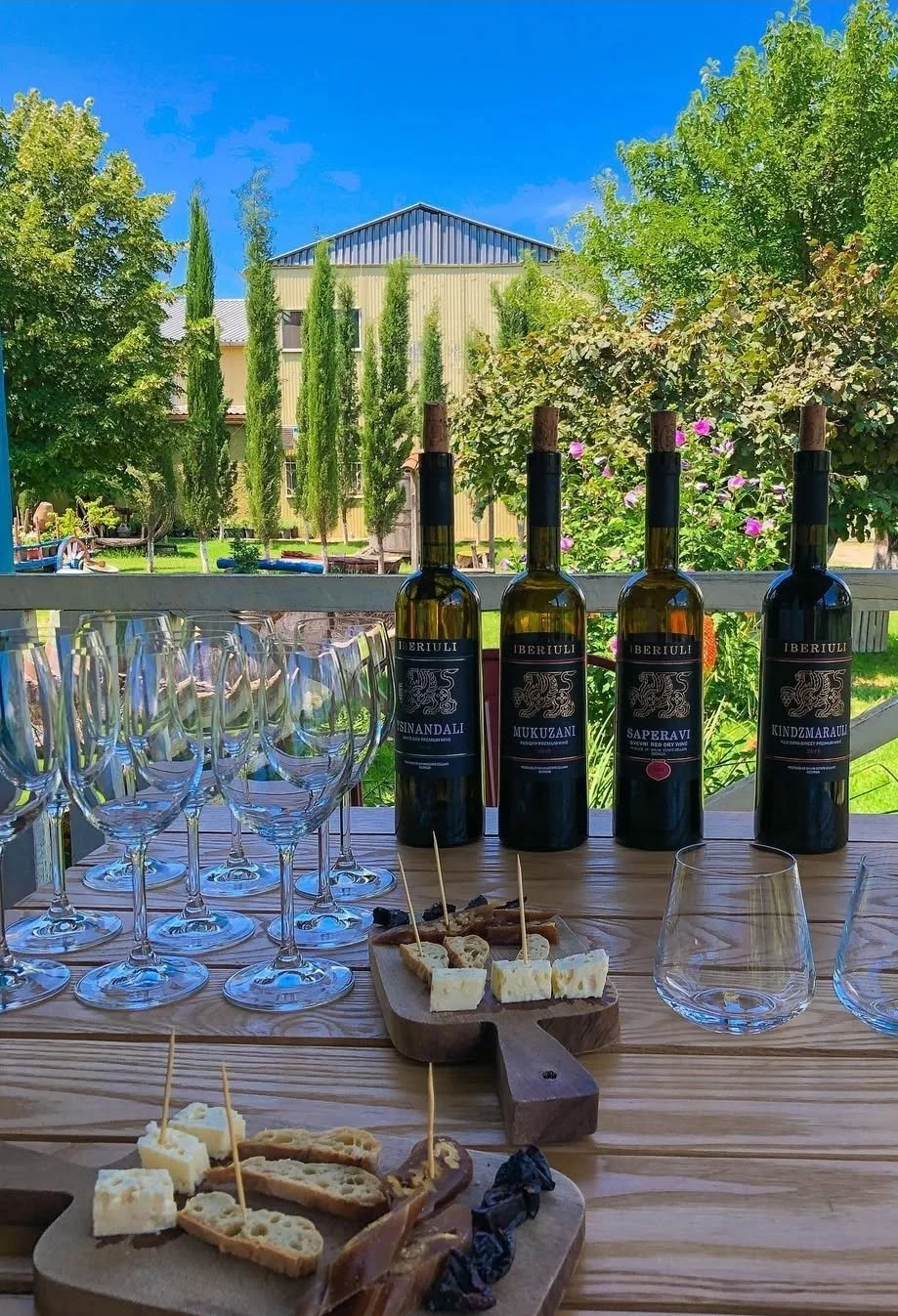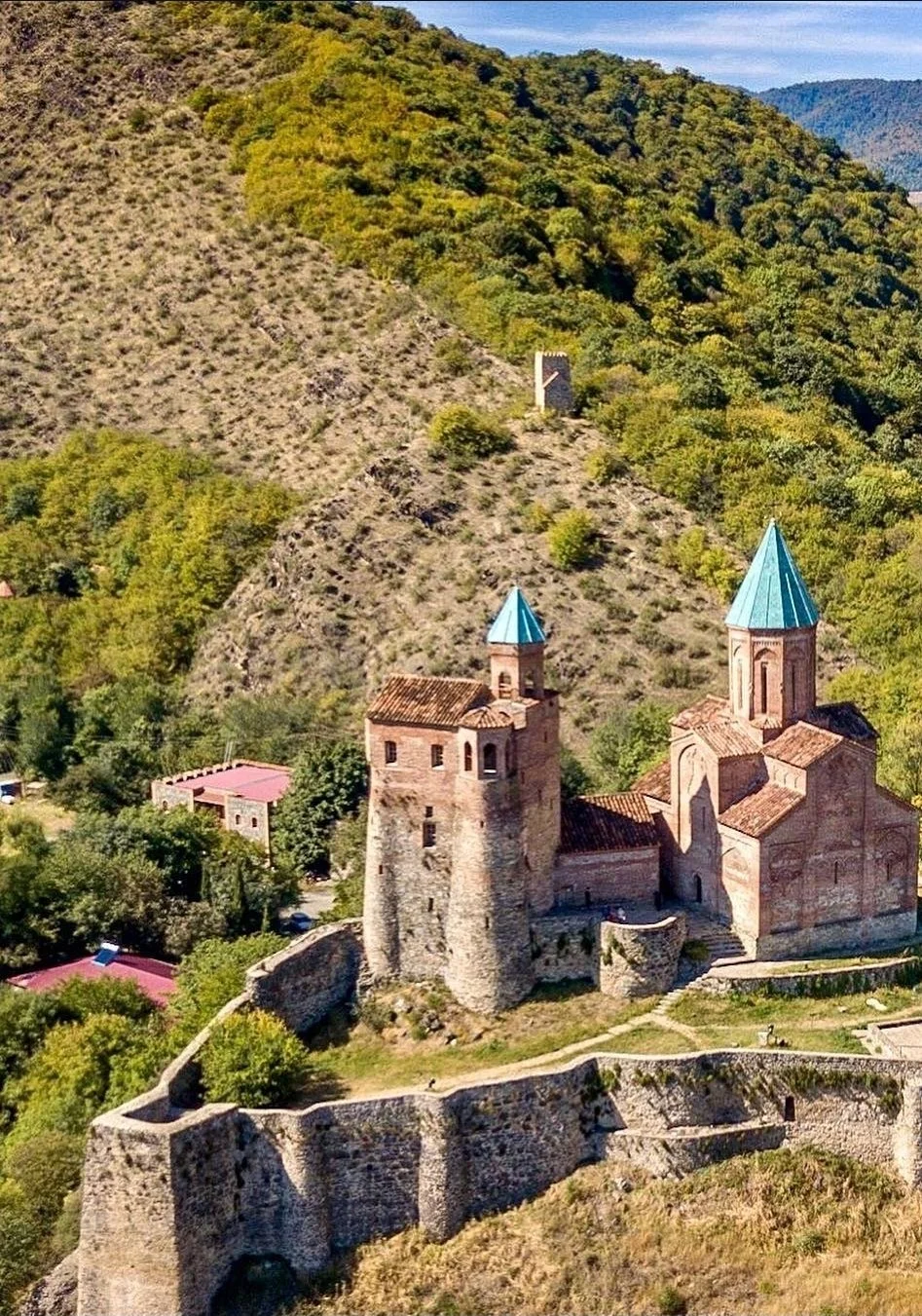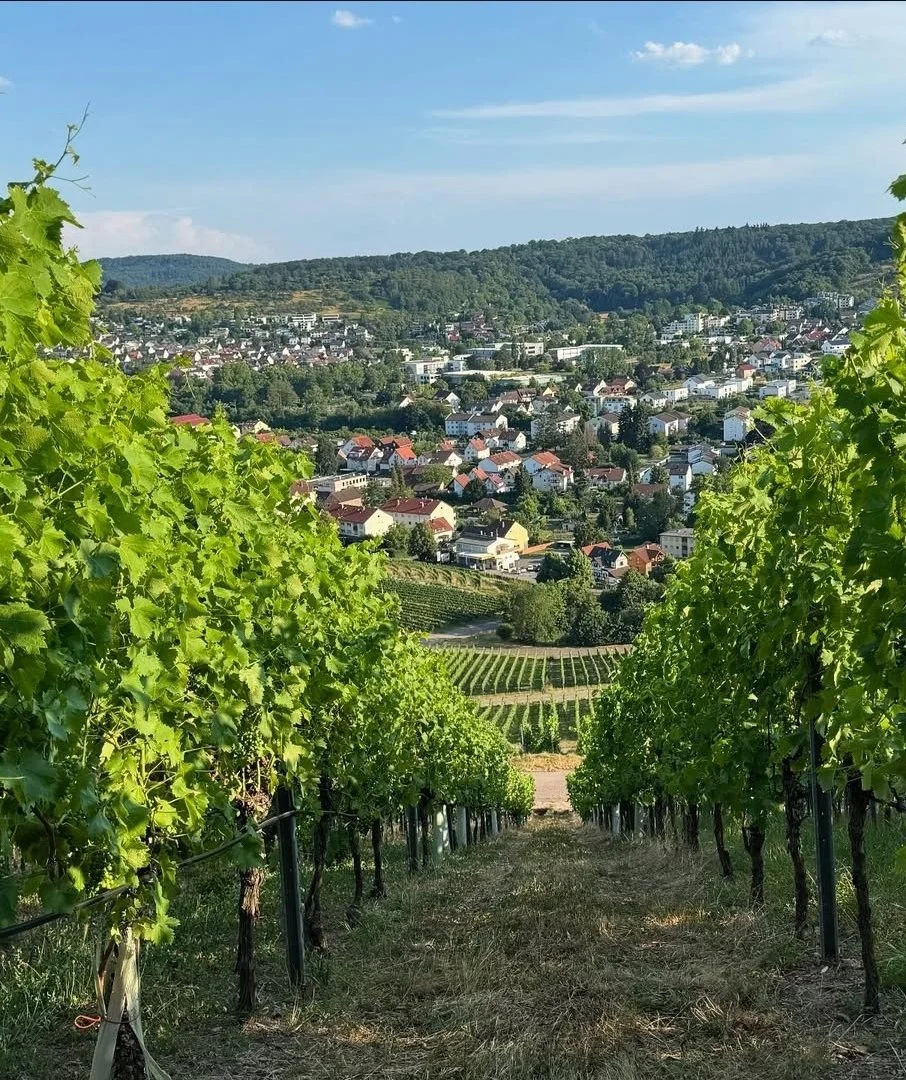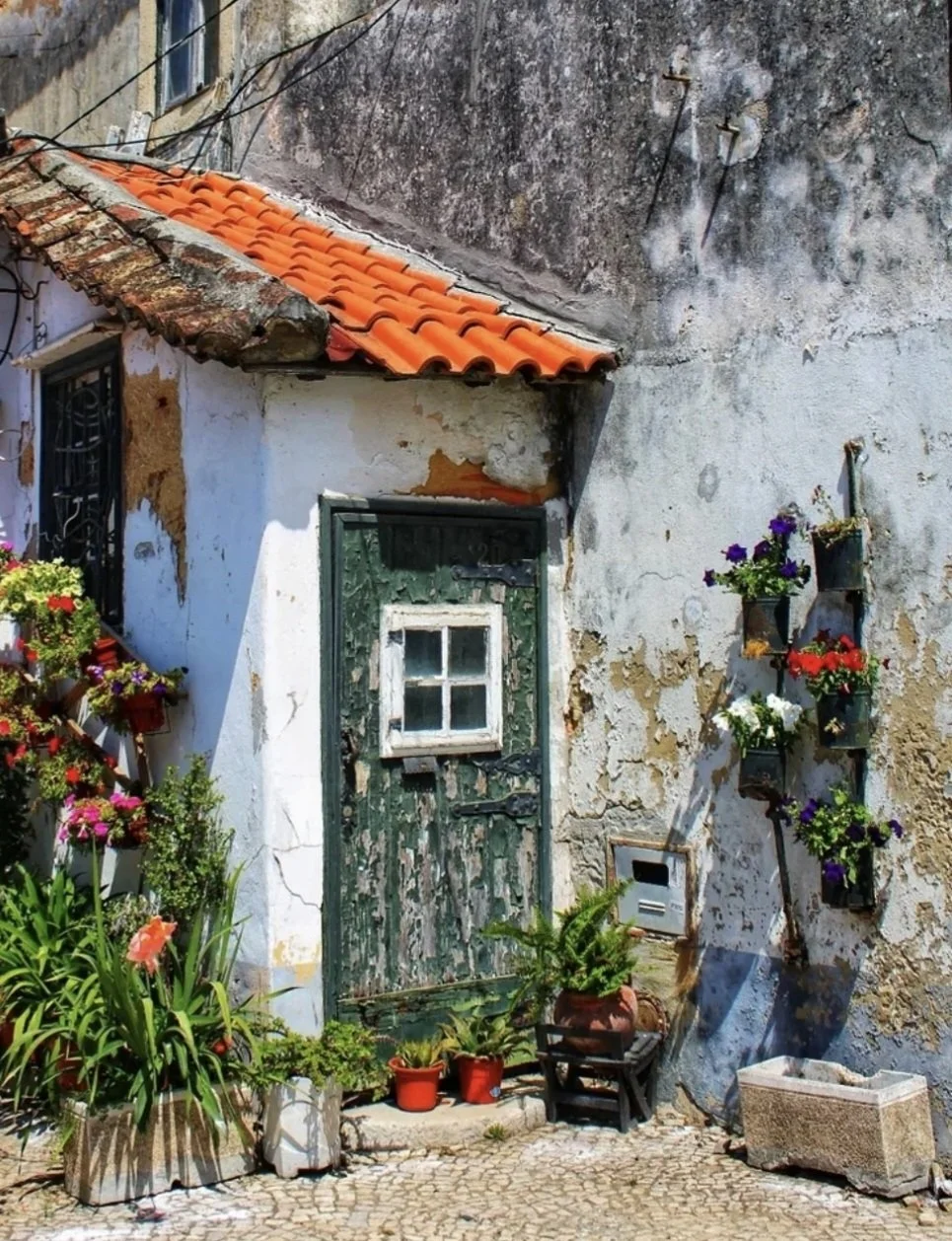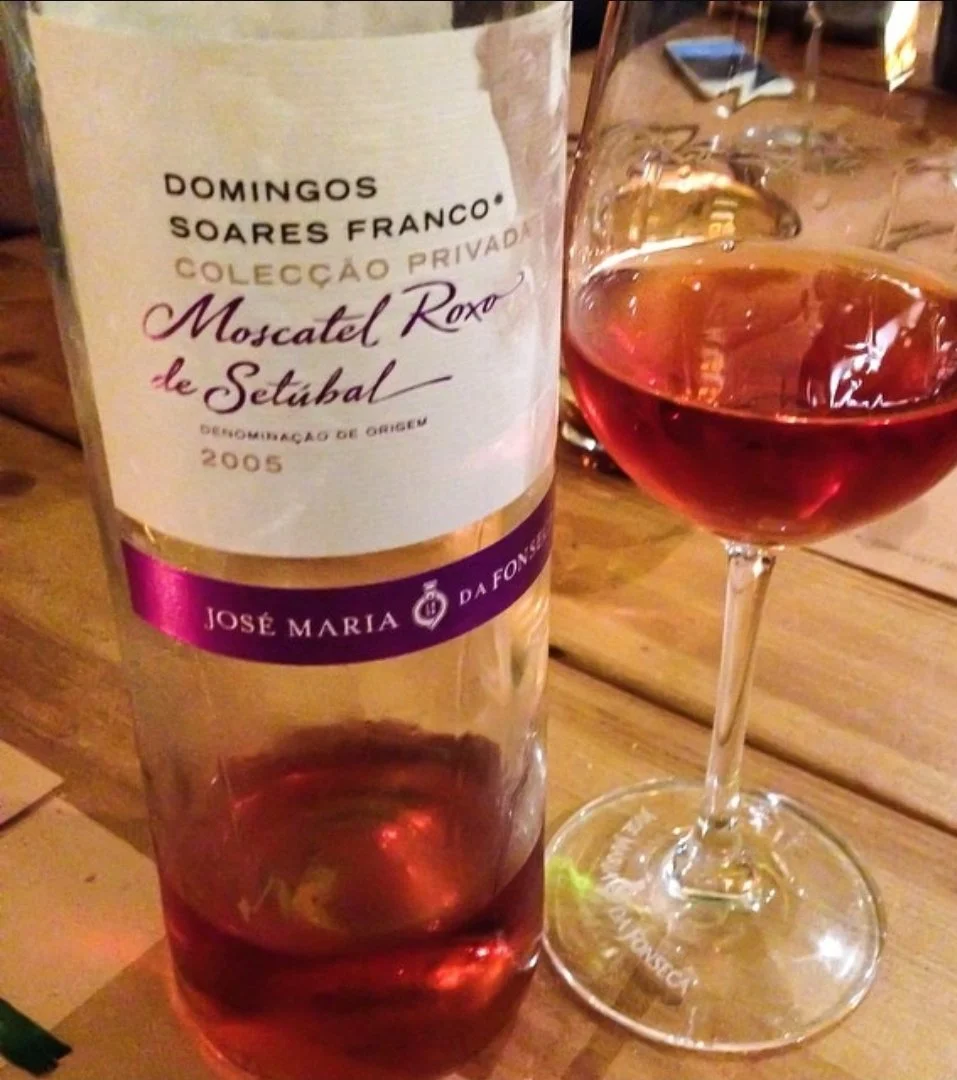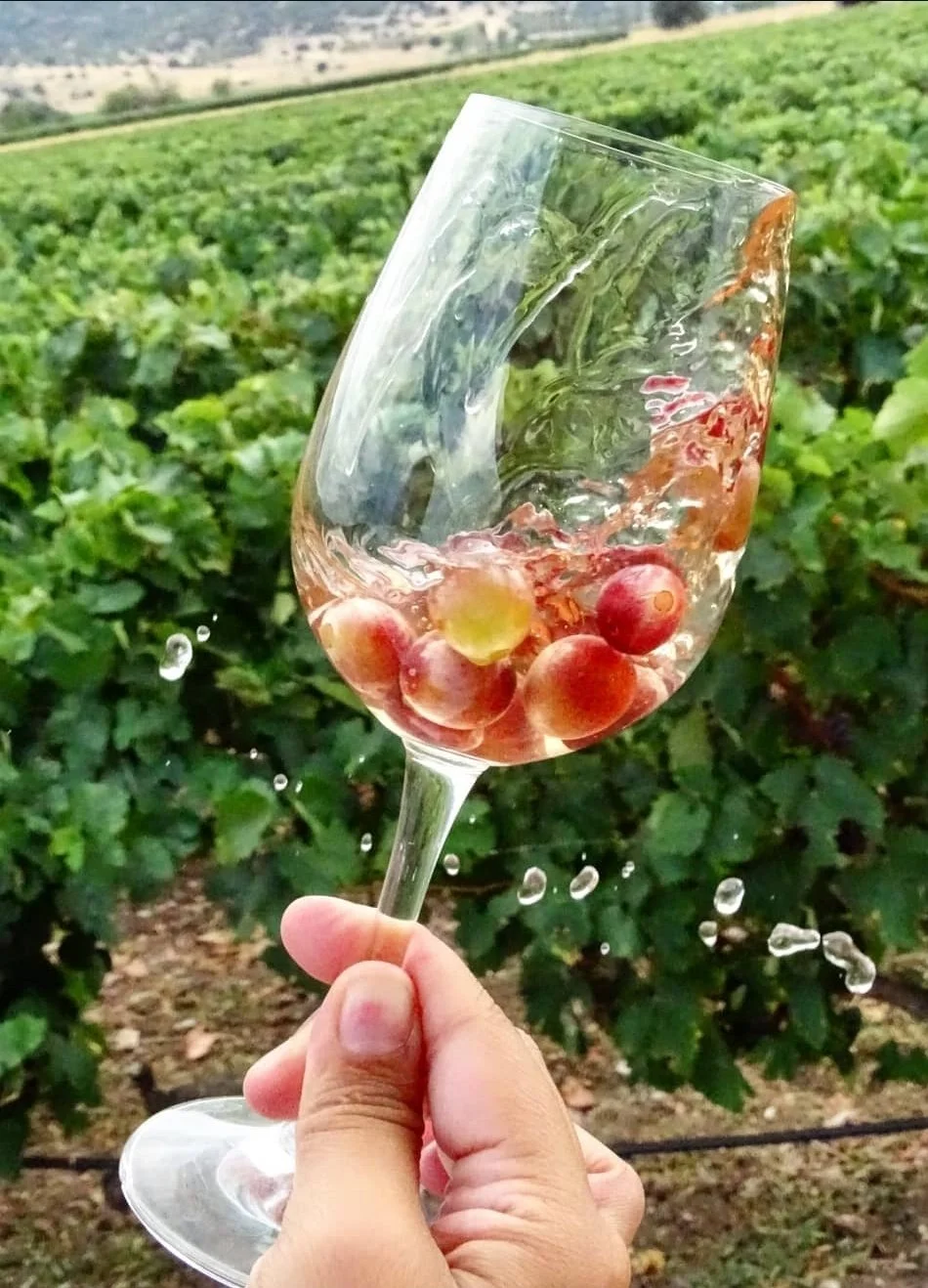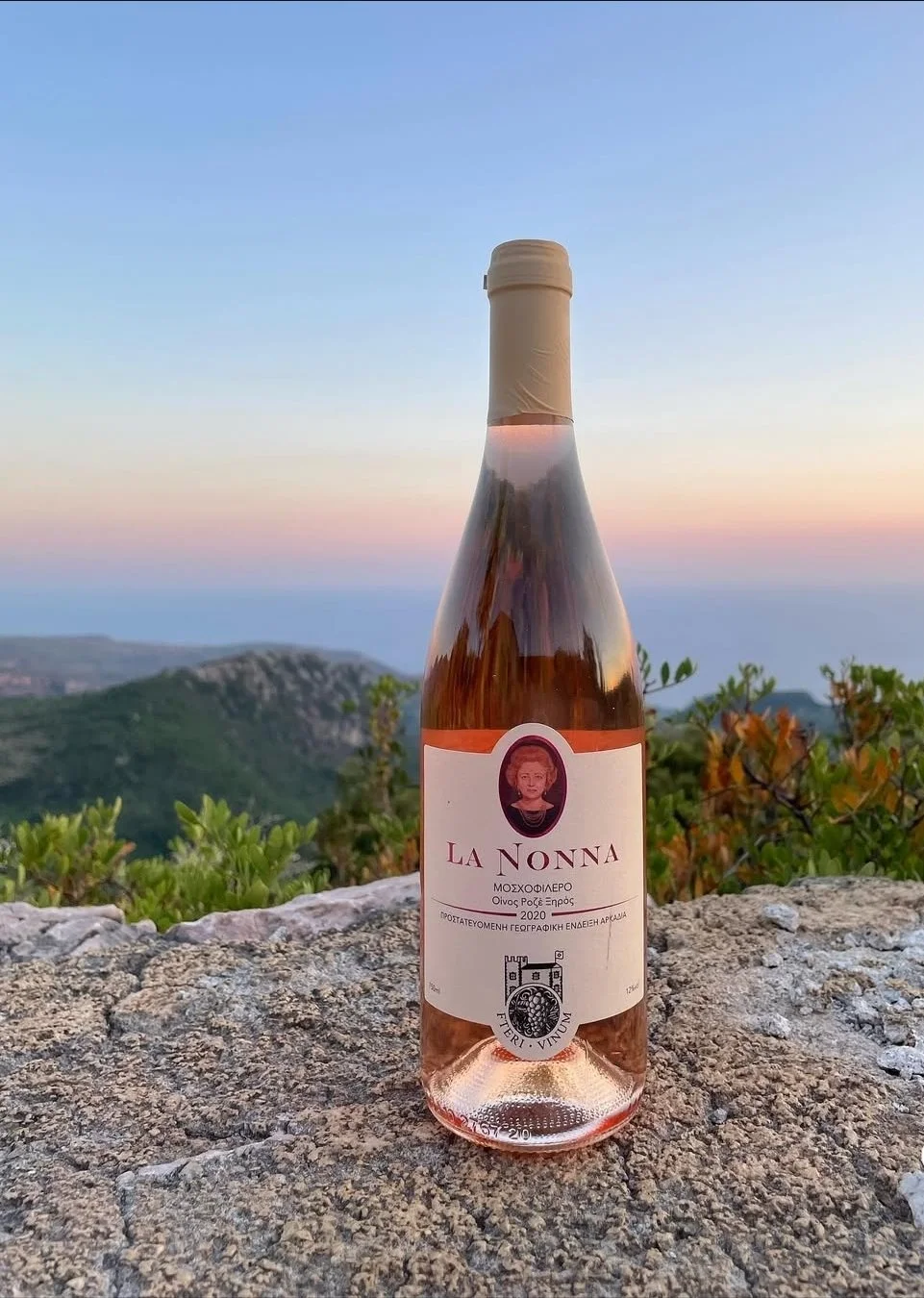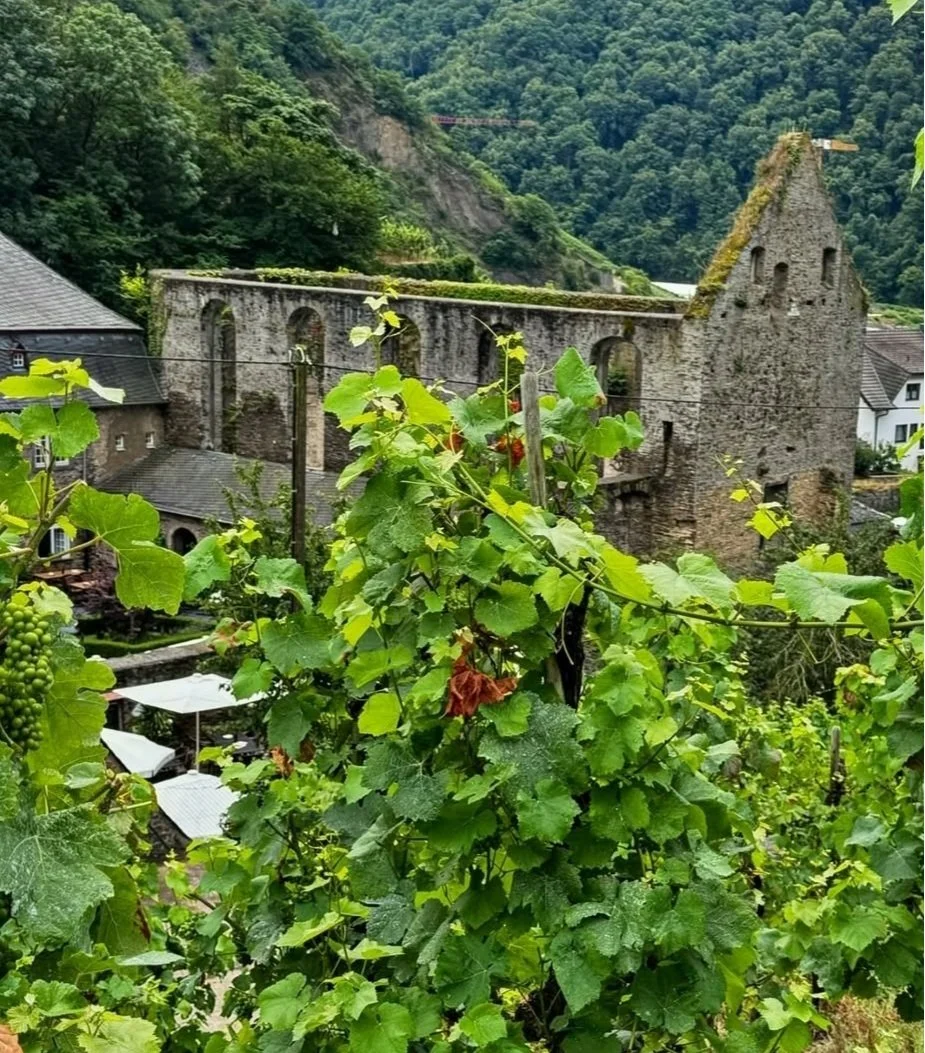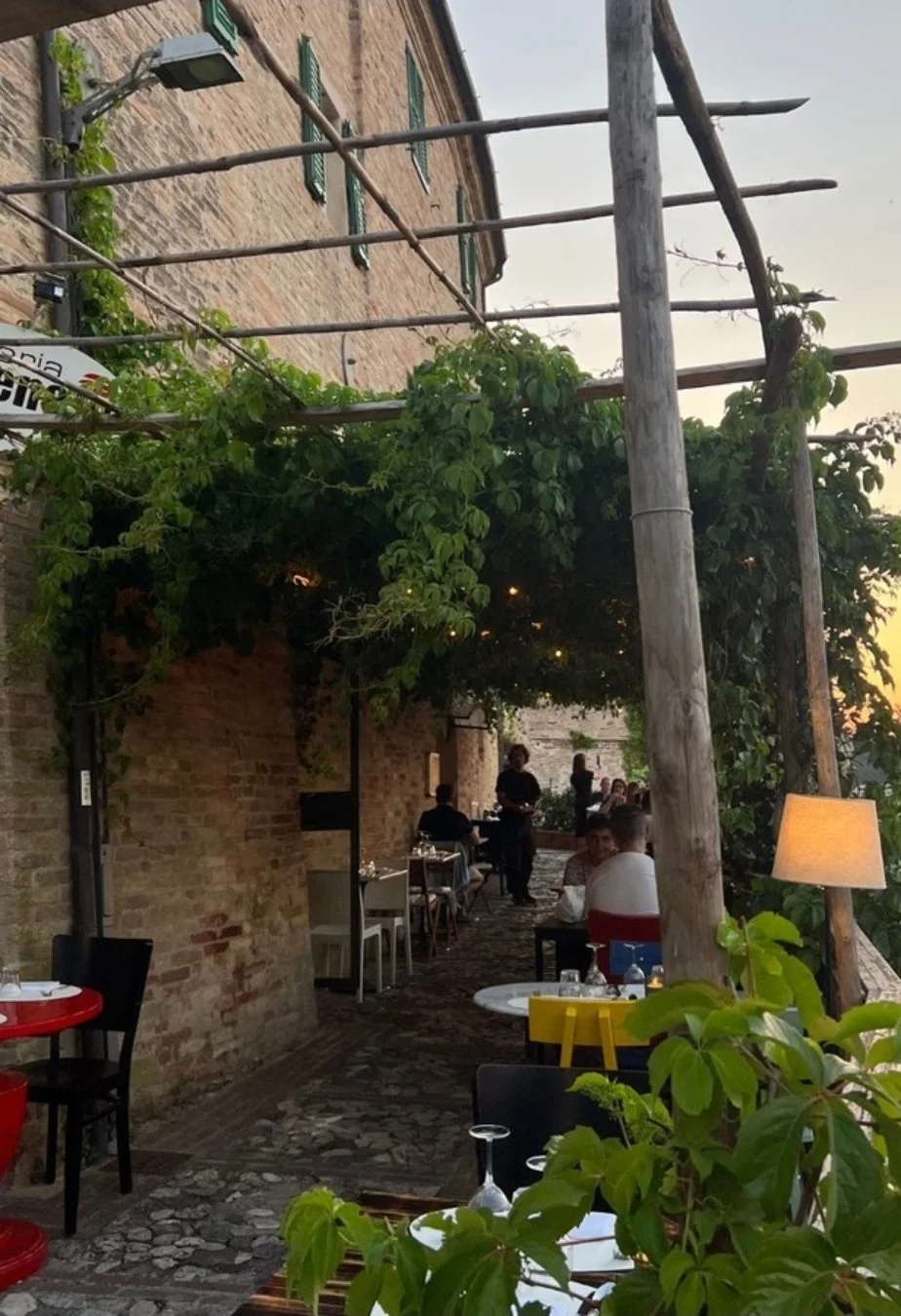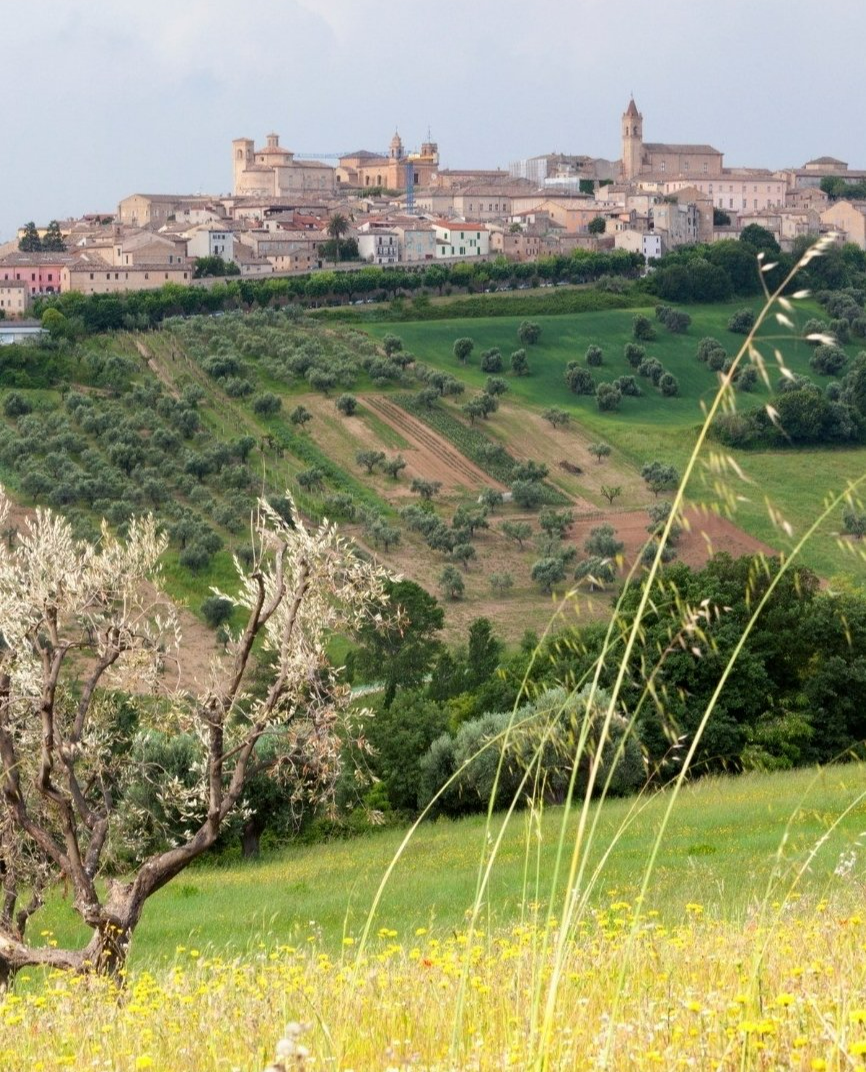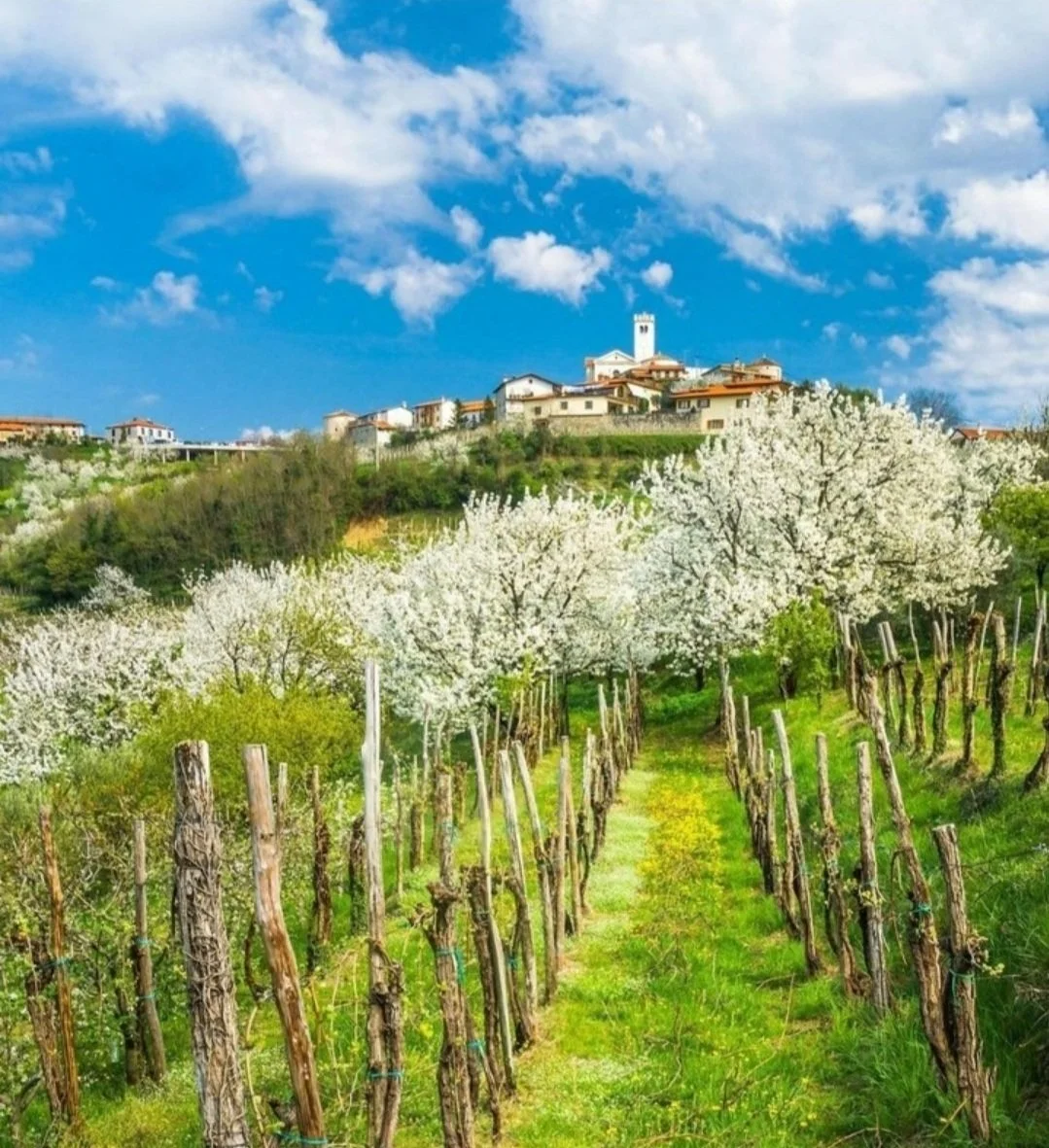8 Peaceful Wine Regions in Europe You’ve (Probably) Never Heard Of
Sometimes the best wine trips aren’t to the big, glossy names you’ve seen a hundred times in guidebooks. Don’t get me wrong - Bordeaux, Chianti, and Rioja are classics for a reason. But if you’ve ever visited in peak season, you’ll know how easy it is for the experience to feel a little too polished, a little too crowded, and sometimes a little rushed. You line up for tastings, you’re poured a flight, and before you’ve even had a chance to savor it, it’s time to move on.
The truth is, some of Europe’s most memorable wine moments happen in the quieter corners - places where wine culture still feels personal, unpolished, and connected to everyday life. These are the regions where tastings take place in someone’s courtyard, where the winemaker pulls up a chair to chat about their vines, or where you’re offered a plate of bread, cheese, and olives simply because that’s how they’ve always done it. There’s no rush, just a genuine connection to the land and the people who care for it.
Hidden wine regions in Europe (like Kakheti in Georgia with its centuries-old qvevri tradition, Portugal’s Setúbal Peninsula with its breezy coastal Moscatel, or Slovenia’s Goriška Brda where olive trees and vineyards blur together) remind us that wine doesn’t need to be grand to be extraordinary. These places aren’t filled with tour buses or crowded tasting rooms. Instead, they offer landscapes where life moves slower, flavors that are deeply tied to tradition, and a kind of calm that makes every sip taste richer.
So if you’re craving a wine escape this year that feels a little softer, a little more soulful, this guide is for you. We’ve rounded up 8 peaceful wine regions in Europe you’ve probably never heard of - places where the rolling hills stretch quietly into the distance, the villages still hum with local life, and every tasting feels like an invitation to linger. These aren’t just trips for wine lovers… they’re for anyone who wants to travel slower, avoid the crowds, and discover a more intimate side of Europe.
Somontano, Spain – Quiet Vineyards at the Foothills of the Pyrenees
Somontano sits quietly at the foothills of the Pyrenees, and it still feels completely overlooked — in the best way. The landscape is soft and open, with rows of vines rolling toward the mountains, olive groves tucked between villages, and a general sense that nobody here is in a rush.
Barbastro is a nice little base if you want to spend a few peaceful days exploring. It’s not a flashy town — just a handful of relaxed cafés where you can ease into your day, a small market that sells whatever’s fresh and local, and the kind of friendly atmosphere where people still stop to chat in the square.
The wineries around here are refreshingly low-key. There’s no polished showroom vibe, no big coach tours pulling up. It’s mostly small, family-run places where you’ll probably meet the owner pouring the wine — and tastings feel personal and slow. The reds are what this region does best: mainly Garnacha and Syrah blends that feel surprisingly fresh and easy to drink, even in the heat. If you’re in the mood for something lighter, there are some really nice local whites too, made from grapes like Macabeo or Chardonnay.
This is the kind of place where you don’t need a strict plan. You can just spend a day wandering between quiet wineries, stopping for tapas whenever you feel like it, and driving through the kind of scenery that makes you want to pull over just to take it all in. Even the bigger wineries, like Viñas del Vero, feel unpretentious and relaxed — and you’re unlikely to encounter crowds.
If you’re up for a short detour, the hilltop village of Alquézar is about 20 minutes away and really worth it. It’s one of those places that feels like time has slowed down: narrow stone streets, incredible views over the river canyon, and a peaceful atmosphere that makes you want to stay longer than planned.
Try to visit midweek if you can — everything feels even slower then. And since a lot of the wineries are small and family-run, it’s worth calling ahead to make sure they’re open for tastings. While you’re in Barbastro, pop into one of the simple old-town bars and order a glass of Somontano tinto with a plate of jamón or tortilla — it’s one of those simple pleasures that feels just right here.
How to get there:
It’s easy! Just take a train or bus from Zaragoza to Barbastro (about 1.5 hours), then rent a car locally or grab a taxi to reach the surrounding wineries and villages. The roads are quiet and easy to navigate, so you can take your time.
Kakheti, Georgia – Amber Wines, Qvevri Traditions, and Slow Feasts
Kakheti is Georgia’s wine heartland but somehow still flies under the radar compared to Europe’s more famous regions. The landscape is open and sunny — vineyards rolling across wide plains with the Caucasus mountains in the distance. There’s this laid-back, unpolished charm everywhere you go.
Tastings here don’t feel like formal events. Instead, you might find yourself sitting under a fig tree in someone’s garden, with homemade bread, salty local cheese, and a winemaker who’s genuinely happy to talk about what they do — not in a rehearsed way, but as part of a conversation. Most wines here are amber-colored, made in those beautiful old clay vessels called qvevri. They’re earthy, full of character, but surprisingly approachable, and they pair perfectly with the long, slow meals that seem to happen naturally in Kakheti.
Sighnaghi is an easy and beautiful base. It’s a tiny hilltop town with cobbled streets, sweeping views over the Alazani Valley, and a sleepy, peaceful atmosphere that invites you to stay longer than planned. From here, it’s simple to visit small, family-run wineries where nothing feels rushed — some don’t even have official tasting rooms, but you’re always welcome.
The pace here is what makes Kakheti so appealing. There’s no rush to tick off vineyards. You just let the day unfold: a glass of amber wine here, a plate of homemade khachapuri there, a chat with a winemaker, maybe a visit to a tiny cellar tucked behind someone’s house.
If you want the calmest experience, try visiting midweek and avoid national holidays — the whole region feels quieter then. And don’t over-plan: the charm of Kakheti is in its casual rhythm. If a winemaker offers you a seat for a snack or a second glass, say yes — those spontaneous moments are often the best part of the day.
How to get there:
It’s an easy journey from Tbilisi — about two hours by car, whether you rent your own or arrange a private transfer. The drive itself is part of the experience: open roads, scattered villages, and plenty of places where you might want to stop for a coffee or just to admire the views.
Swabia, Germany – Cozy Taverns and Local Wine Culture
Swabia isn’t where most travelers think to go for wine in Germany — and that’s what makes it such a refreshing place to visit. Tucked in the Württemberg region, this area feels quietly authentic. Rolling hills dotted with vines, sleepy villages, and a kind of easy, lived-in atmosphere that makes it ideal for anyone who prefers things simple and calm.
The wine culture here is low-key, almost casual. Instead of big estate tasting rooms, you’re more likely to end up in a Winzerstube — small, cozy taverns where the wine is poured by the winemaker and served alongside hearty, traditional dishes. Think delicate Trollinger reds, local Rieslings, and a vibe that encourages you to linger for hours, not rush through a tasting flight.
There’s no pressure to plan an intense itinerary in Swabia. A relaxed weekend here might look like wandering through a quiet town in the morning, stopping for a glass of wine with lunch, and then driving out to a small winery in the afternoon where tastings are personal and friendly, without crowds or pretension.
The villages themselves are lovely — places like Esslingen or Heilbronn offer a glimpse of everyday life, with timbered buildings, local markets, and narrow lanes that invite slow exploration. The vineyards surrounding them feel open and welcoming, often with walking trails weaving through, so you can enjoy a peaceful stroll between tastings.
How to get there:
Swabia is easily accessible from Stuttgart — regional trains will take you to Heilbronn, Esslingen, or other small wine towns in under an hour. From there, it’s easy to explore on foot, by bike, or with a short taxi ride to nearby wineries.
If you visit in the autumn, look out for Federweißer — a lightly fermented young wine that’s only available for a few weeks. Locals sip it casually, often paired with onion tart (Zwiebelkuchen), and it’s one of those seasonal experiences that feels simple and memorable.
Setúbal Peninsula, Portugal – Coastal Moscatel and Seaside Calm
Just south of Lisbon, the Setúbal Peninsula is one of those places that somehow stays under the radar despite being so close to the capital. The landscapes here are beautiful: coastal cliffs, quiet beaches, and rolling vineyards, all with that salty breeze in the air. It feels laid-back and easy, perfect for slow travel and peaceful days.
This region is known for Moscatel de Setúbal — a sweet, aromatic fortified wine that’s a bit like a Portuguese answer to sherry but with its own character. Tastings here tend to be relaxed and personal, often in family-run wineries where you might sit outside under a vine-shaded terrace while someone talks you through the history of their wine in a way that feels genuine, not scripted.
The peninsula itself invites you to slow down. You could start the day with a peaceful walk along the coast, stop into a quiet winery for a tasting, and then settle in at a little seaside restaurant for fresh seafood and a glass of something golden. It’s the kind of place where even on a weekend, things never feel rushed.
The local seafood here is incredible — especially in the tiny villages on the coast — so plan for a long lunch after your tasting. And if you visit during September’s grape harvest, you might even catch some small harvest celebrations that are very local and low-key, the kind of thing you’d miss if you didn’t know they were happening.
How to get there:
The easiest way is by train from Lisbon to Setúbal (about 40 minutes), and from there you can rent a car or take a short taxi to reach wineries dotted around the countryside and coast.
Mantinia, Greece – Crisp Moschofilero in the Peloponnese Hills
Most people think of Santorini or Crete when they imagine Greek wine, but Mantinia feels completely different — and wonderfully peaceful. Up in the hills of the Peloponnese, this region is all about altitude, fresh air, and small, family-run wineries tucked into a landscape that feels open and calm.
The wines here are mostly Moschofilero — floral, crisp, and perfectly refreshing, especially when paired with local food. Tastings are casual and personal: a winemaker might pull up a chair, pour you a glass, and share stories about the land or their family’s vineyard, without any rush or pretension.
The villages nearby add to the feeling of slow, unhurried travel. Tripoli makes a convenient base — it’s not a touristy town, just a laid-back local hub with squares, quiet cafés, and a nice balance of town and countryside atmosphere. From there, it’s easy to meander between small wineries, stopping wherever feels right, enjoying the mountain views along the way.
This is a place where you don’t need a schedule — just time and curiosity. It’s ideal for travelers who want a genuine, down-to-earth wine experience without crowds or fuss.
How to get there:
It’s about a two-hour drive from Athens to Tripoli. Once there, a rental car makes it easy to explore the surrounding vineyards and small towns at your own pace.
If you can, plan a tasting later in the afternoon — the light is beautiful then, the vineyards feel peaceful, and you’ll often have the place almost to yourself. And don’t leave without trying a mezze spread with your wine — simple local dishes like grilled vegetables, olives, and soft cheeses that make the whole experience feel even more relaxed and satisfying.
Ahr Valley, Germany – Pinot Noir and Peaceful Wine Walks
The Ahr Valley feels like one of Germany’s best-kept secrets. It’s a small, narrow valley lined with vineyards, tucked between forested hills, and it’s all wonderfully low-key. The villages here are pretty and peaceful — half-timbered houses, cobbled streets, and family-run wineries that keep things simple and welcoming.
This region is known for Pinot Noir (called Spätburgunder here), but there’s no formal scene to navigate. Tastings often happen in rustic cellars or casual courtyard setups, with a relaxed, friendly vibe that makes it easy to slow down and stay awhile.
One of the nicest ways to experience the Ahr Valley is on foot — there are gentle walking paths that connect villages and weave through the vineyards. So you can wander between tastings, stopping at a quiet winery, finding a bench with a view, then strolling on to the next small town when you’re ready. It all feels unhurried and intimate, even during harvest season.
This is the kind of place where a peaceful weekend feels like enough. A few gentle walks, some local Pinot, and plenty of pauses for simple meals — it’s easygoing in the best possible way.
If you visit in autumn, ask for Federweißer — a young, lightly fizzy wine that’s only available for a few weeks and is typically served with Zwiebelkuchen (onion tart). It’s a seasonal treat and one of those local rituals that makes visiting here at harvest time feel extra special.
How to get there:
Ahrweiler is the heart of the valley and is easily reached by train from Cologne in just over an hour. From there, you can walk or cycle between wineries and villages — distances are short, and everything feels close and manageable.
Want more quiet, cozy travel ideas like this?
Join our newsletter and get our favorite peaceful places sent straight to your inbox.
Le Marche, Italy – Verdicchio, Seaside Breezes, and Hidden Villages
Le Marche sits quietly between Tuscany and Abruzzo, but it feels worlds away from the crowds you might find next door. This region has a calm, authentic vibe that’s perfect if you’re craving a peaceful escape. Rolling hills lead down to the Adriatic coast, dotted with olive groves and tidy rows of vines — and almost no one seems to be in a hurry.
Verdicchio is the standout here — fresh, bright, and perfect for summer afternoons — but you’ll find a variety of small family-run wineries scattered through the countryside, each one offering a slightly different expression of the land. Tastings are usually casual and intimate, more like a conversation than a formal appointment.
The rhythm here is what makes it special. You can spend the day winding slowly through backroads, stopping at a vineyard or two when the mood strikes, maybe pausing for lunch at a simple trattoria where the tables spill out onto a sunny terrace. The coastline is close too, so you can easily end the day by the sea, with a glass of crisp white and a plate of fresh seafood.
It’s a place that encourages you to linger — to sip slowly, to take your time between villages, and to soak up the understated beauty of a region that hasn’t been taken over by mass tourism.
How to get there:
Fly into Ancona or Bologna, then rent a car — it’s really the best way to explore Le Marche’s winding country roads and reach the smaller, tucked-away wineries that give this region its quiet charm.
If you visit in late summer, keep an eye out for tiny, local food festivals in hilltop villages — often just a few long tables set out under fairy lights, serving simple local dishes and pouring house wine. These evenings are casual, welcoming, and the kind of experience that feels like it belongs entirely to the moment.
Goriška Brda, Slovenia – Gentle Whites, Olive Groves, and Borderland Charm
If you’re looking for a wine region that feels completely peaceful, Goriška Brda is a dream. It sits right on the border with Italy, blending cultures and landscapes in a way that makes everything feel soft and natural — olive trees mixed with vines, small stone villages perched on hilltops, and quiet roads that wind gently through it all.
The wineries here are small, often family-owned, and many tastings take place in back gardens or cozy courtyards, sometimes with a view that stretches all the way to the Adriatic. The wines themselves lean fresh and clean: delicate whites like Rebula that suit a warm afternoon perfectly.
There’s no pressure to rush or pack in too much. You could spend an entire day wandering between tiny villages, stopping at whatever winery catches your eye, and settling in for a plate of local cheese and olives while you sip. The whole region feels personal, unpolished in a good way, and ideal if you want a quiet, authentic wine experience where nothing feels commercial or crowded.
Little insider tip:
Many winemakers here run small guesthouses or agriturismi, so if you want a real local experience, spend the night at one of these family-run places. You’ll often be treated to a slow breakfast the next morning, with home-grown produce and a chance to soak up the quiet rhythm of the area before heading off again.
How to get there:
It’s easy to reach Goriška Brda from Ljubljana: about a 1.5-hour drive. If you’re arriving by train or bus, Nova Gorica is the closest town, and from there it’s a short taxi or rental car ride into the hills.
Why These Peaceful Wine Regions in Europe Are Worth the Detour
What ties all these places together isn’t just the wine - it’s the way they invite you to slow down. In Somontano, you’ll find yourself sipping Garnacha with a backdrop of the Pyrenees. In Georgia’s Kakheti, amber wine is poured alongside homemade bread under the shade of a fig tree. In Setúbal, a glass of Moscatel feels even sweeter when the sea breeze drifts through the vineyards. And in Slovenia’s Goriška Brda, you’ll wander from cellar to cellar on quiet backroads, with no crowds in sight.
These aren’t the kind of regions where you rush through five wineries in a day. They’re the places where one or two tastings (done slowly, with time to chat and linger) leave you more satisfied than a packed itinerary ever could. You’re not just drinking wine here; you’re experiencing a way of life that’s rooted in land, family, and tradition.
For slow travelers, that’s the real magic. The wine becomes a lens into the culture. The landscapes—the rolling hills of Le Marche, the high-altitude freshness of Mantinia, the cozy villages of the Ahr Valley - become part of the story. And because these regions are still under the radar, you’ll often feel like you’ve stumbled onto something secret, something just for you.
So if you’re planning a European wine trip this year, and want more than the usual stops - consider skipping the busier routes. Seek out these peaceful wine regions instead. Bring your curiosity, an empty notebook for tasting notes (or just memories), and the willingness to let days unfold at their own pace. Because sometimes, the best wine trips aren’t about the most famous bottles - they’re about the quiet moments, the small producers, and the kind of experiences that you will remember.
Prefer smaller authentic places over large overcrowded cities?
If this kind of travel speaks to you, our popular Summer Market Guide is for you. It’s filled with curated, crowd-free markets and towns just like these — complete with dates, tips, and cozy corners you won’t find on TikTok…
FAQ - vineyards in Europe
What are some hidden wine regions in Europe for 2025?
Regions like Somontano in Spain, Kakheti in Georgia, Swabia in Germany, and Goriška Brda in Slovenia are peaceful wine destinations that haven’t hit the mainstream yet. They’re ideal if you’re looking for calm tastings, cozy landscapes, and a slower vibe without tourist crowds.
How do I visit peaceful wine regions in Spain?
Skip the busier areas and head to Somontano. It’s easy to reach from Zaragoza, and you’ll find family-run wineries, mountain views, and relaxed tasting rooms where everything feels low-key and authentic.
Is Setúbal worth visiting for wine lovers?
Yes — Setúbal is an underrated gem just south of Lisbon, known for Moscatel de Setúbal. The vibe is quiet and coastal, with laid-back wineries and plenty of space to enjoy a peaceful afternoon away from crowds.
Where can I find quiet wine tasting near Vienna?
The Thermenregion, south of Vienna, is perfect for a peaceful day of wine tasting. It’s known for crisp white wines and doesn’t attract crowds, so you can take your time and enjoy a calm atmosphere.
What’s the best wine region in Greece for a quiet visit?
Mantinia, in the Peloponnese, is a peaceful choice — cool-climate vineyards, small estates, and welcoming tastings paired with simple local food. A great option if you want to avoid the busier Santorini wine scene.
Are there peaceful wine regions in Italy that aren’t Tuscany?
Le Marche is an excellent alternative. It’s still largely undiscovered, with gentle hills, coastal views, and small family-run wineries offering unhurried tastings, especially Verdicchio whites that pair beautifully with local seafood.
Best wine regions in Europe without crowds for 2025?
If you’re looking for wine regions in Europe that still feel peaceful in 2025, Somontano, Kakheti, Swabia, Setúbal, Mantinia, Ahr Valley, Le Marche, and Goriška Brda all offer quiet tasting experiences, cozy towns, and plenty of space to slow down.



